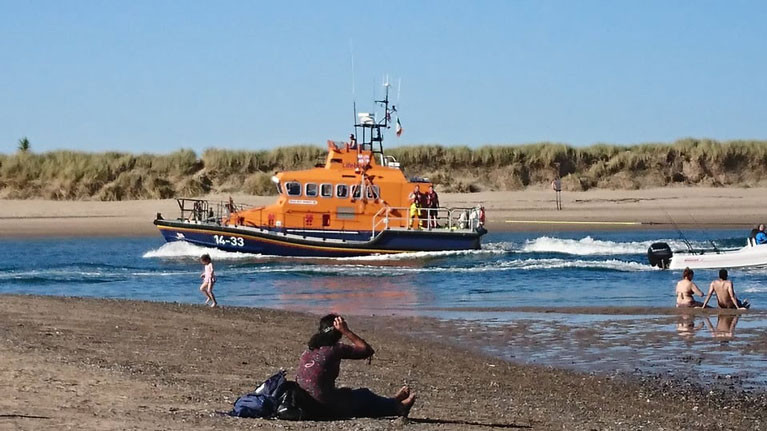Howth RNLI launched both the all-weather lifeboat and the inshore lifeboat in two separate callouts over the weekend to rescue eight people who found themselves in difficulty. One callout saw a teenager’s life saved when the lifeboat crew found him clinging to a buoy in the middle of the estuary.
The RNLI pagers sounded at 1.35 pm on Friday (7 August) after a call was placed to the Coast Guard reporting two people in difficulty swimming at Cush Point in Baldoyle estuary. The inshore lifeboat was launched and located the two people 11 minutes later as they made their way back to shore. Colin Murray from Howth Coast Guard spoke to the two boys and it emerged that there was a third person still missing. The lifeboat crew quickly established a search pattern and located the casualty clinging to a buoy in the middle of the estuary. He had been there for nearly 30 minutes and was exhausted. The casualty was taken aboard the lifeboat, assessed and treated before bringing back to the lifeboat station.
The lifeboat crew were called into action again the following afternoon (Saturday 8 August) at 4.50 pm to reports of a speed boat that had mechanical problems just north of Lambay Island. The all-weather lifeboat was launched and quickly located the boat with four family members onboard. The speedboat was taken in tow by the volunteer crew of the all-weather lifeboat and the family were unharmed by the incident and returned safely to Malahide Marina.
Speaking following the callout which saw the teenager rescued, Fin Goggin, Howth RNLI Helm said: ‘What we thought was a callout to two swimmers who had made their way back to shore quickly turned into a search for a missing teenager. When we found him a short time later clinging to the buoy, very tired but alive, we realised it could have had a very tragic outcome.
































































